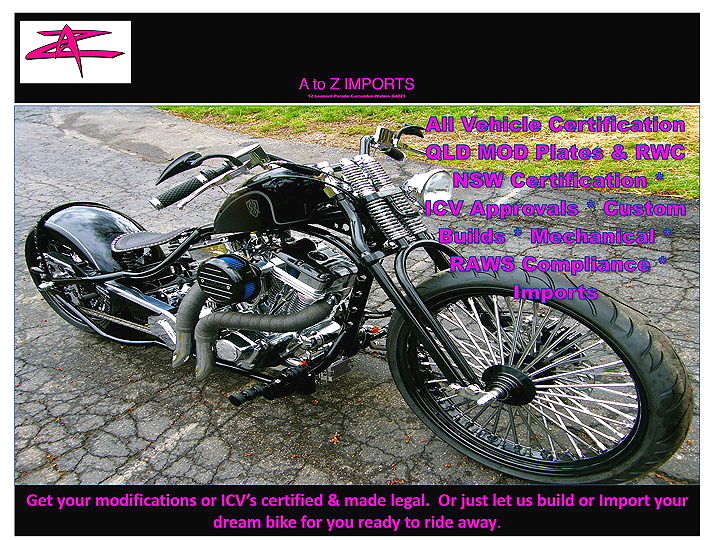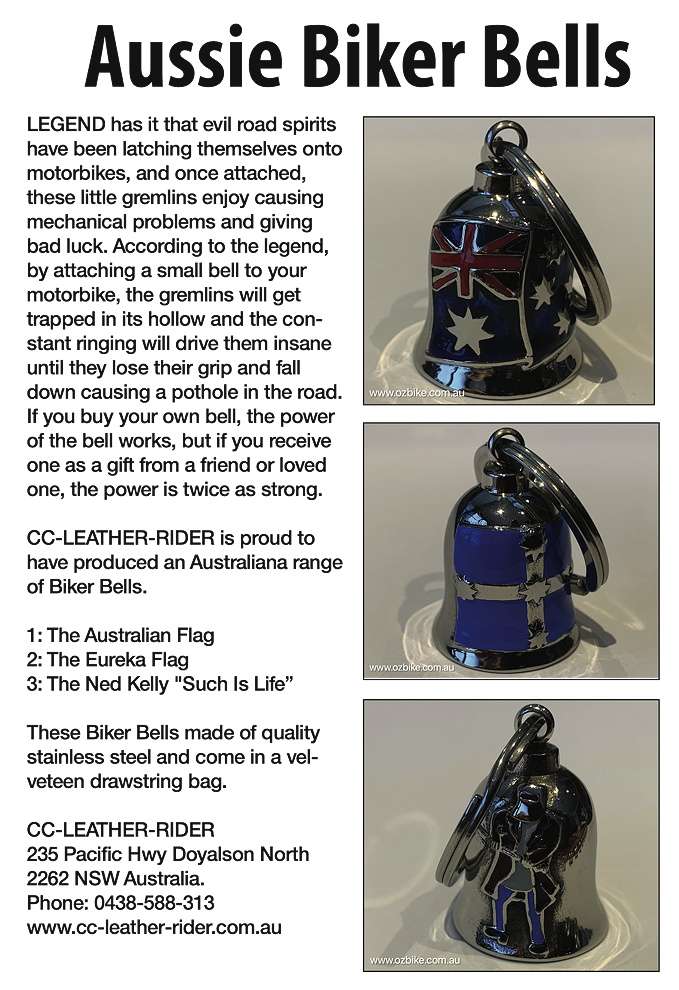Road Testing the Harley-Davidson Sportster S
Regular Ozbike test rider, Paul Angus, takes the new Sportster S for a spin over the Blue Mountains.

THE Harley-Davidson Sportster S has a four-inch colour TFT display. A what? Thank God for the interweb. Apparently, TFT stands for Thin-Film-Transistor liquid crystal display. Basically, it’s a simplified version of the screen on your smartphone. A pretty remarkable piece of technology only the size of an old analogue speedo but with a whole lot more information. The TFT display on the sportster S will tell you:
- How fast you are going.
- What gear you are in.
- How many kilometres you have travelled both overall and as seperate resettable trips.
- How much fuel you have left and the distance that fuel will take you at your current speed.
- What the ambient air temperature is.
- It will alert you to the possibility of frost.
- Let you know when you leave the side-stand down.
- It will tell you the time.
- How many revolutions the engine is making per minute.
- Your speed setting for the cruise control.
- The air pressure in the tyres.
- What the engine temperature is and the battery voltage.
- There is also a tip-over alert but I feel if you need that you may have larger problems.
- You can pair your phone to the TFT display to access calls, music and navigation.
- It displays which ride mode you are in. There are three factory modes Sport, Road and Rain. There are also two custom modes where you can modify the settings yourself with options for engine braking, throttle response and traction control.
- On top of all these functions, the little four-inch TFT can communicate with you in more than 28 languages.

I suppose you could either view this as information overload or just as very informative. You may think all of this sounds a little too modern and not very Harley-Davidson, but judging the Sportster S on its technology and electronic wizardry would be a terrible mistake because the Sportster S is all about the riding.
I have waxed lyrical about Harley’s new Revolution Max engine before. It sounds angry just idling; on full throttle it sounds very angry. It might not make the beloved potato-potato sound but it has its own unique song. It is an impressive modern V-twin engine that would work in a variety of motorcycles. There is a serious torque available across the rev range: 125 Nm of it, to be specific, most of which is available from just 2500 rpm. Then there is the horsepower: all 121 of them. Peak horsepower arrives at 7500 rpm; the redline at 9000 rpm. Those figures are more performance naked-bike than cruiser. All that power only has to propel 228 kg, ready to ride with petrol in the tank. To put all those numbers into perspective, we need to return to the TFT. Deep in its sub menus can be found a setting called wheel lift mitigation. Only an engineer could have come up with that name. If you turn it off the Sportster S will lift its front wheel in first gear off the throttle. Seriously.

Using the 121 horsepower Sportster S to commute may seem like a touch of overkill. In practice, it performs the role of commuter spectacularly. Perhaps a little too spectacularly. It literally wants to turn every traffic light into the Christmas tree at the start of the quarter mile.
Trying to ride the Sportster S in a sedate fashion is really quite hard but speed humps and potholes will slow you down. The Sportster S has some very impressive suspension components — a fully adjustable linkage mounted mono-shock at the rear and 43 mm inverted forks at the front, also fully adjustable. However, they are somewhat compromised by their short travel. Fifty millimetres of travel for the rear and 91 mm for the front can feel a little harsh on our less-than-perfectly surfaced roads. The effect of the short travel suspension is exaggerated by the forward controls. Harley-Davidson will sell you some mid-controls which will go a long way to alleviating this issue. If you are used to riding sports bikes it will not be a problem. The ride is well damped and within the confines of the suspension travel, pretty comfortable. The riding position is relaxed with only a moderate lean forward to the flat bars. On a practical level, the minimalist body work and single seat make it hard to strap anything to the bike and I am reasonably sure a top box would really spoil the look.
To discover what the Sportster S was like on the wide open road, I headed west out of Sydney for the Bells Line of Road. The road is named after Archibald Bell Jr who was shown the route across the Blue Mountains by two Darug men in 1823. At the time it was part of the traditional Aboriginal pathway network. After being cleared it became the second road across the Blue Mountains. It is a sensational road to ride a motorcycle along especially mid-week when there is usually very little traffic. I had picked a cracker of a day and once I got over the Hawkesbury and through North Richmond onto the Bells Line of Road, I had it pretty much to myself. It is a glorious road running though some seriously beautiful country. You can take it easy on the Sportster S and watch the world go by, however, if you want to cruise along smelling the roses, Harley-Davidson has so many other bikes better suited to that role than the Sportster S. If, alternatively, you want to ride in a more ‘brisk’ fashion, the Sportster S is a brilliant companion. At slow speed around town the wide front tyre can feel a little hesitant to turn into a corner; it turns in a lot easier at speed on an open road. Get into the corner and it feels planted and solid. That front tyre is a 160/70 17 with a strong V profile. It was made specifically for the Sportster S. The rear is a 180/70 16. Both tyres are Harley-Davidson branded Dunlop radials. Their fat profile probably helps absorb a little of the road’s imperfections, however, it is best to try and avoid potholes and large bumps as the short travel suspension can react harshly at speed to both.
By the time I reached Lithgow I was running on vapour. The tank holds just under 12 litres. Harley claims 5.1 litres per 100 km. Those figures must have been obtained by someone with a lot more self control than me. I do not think Harley-Davidson designed the Sportster S with touring in mind — after an hour in the saddle you will need to stretch your legs and probably top up the tank.
The trip back along the Bells Line of Road was sublime. The Sportster S’s blend of low down pull and top end rush is intoxicating. Despite only having one front brake — a radial mounted disc with a four piston calliper, the Sportster S scrubs off speed pretty well especially if you use a combination of front and rear braking. Riding back into Sydney I put the bike into ‘Road’ mode. This softens the throttle response and takes the edge of the Sportster’s aggression.
Back at the lock-up, I cracked open a refreshing ale and reflected on the two weeks I had spent with Harley-Davidson’s Sportster S. Visually, it mixes the retro flat-tracker look with Harley-Davidson’s version of a modern power cruiser. I personally think it looks tremendous. The Revolution Max 1250T engine is a thoroughly modern, engaging V-twin stuffed full of power and torque. It may not be a 45-degree twin but it has character and a sound all its own. Some might argue that function took a back seat to form in certain areas of the Sportster S’s design but it does do what its name implies — it is a very sporty Sportster.

As always, you need to visit your local Harley-Davidson dealer and take one for a test ride. You’ll be impressed.
Article submitted by Paul Angus.


